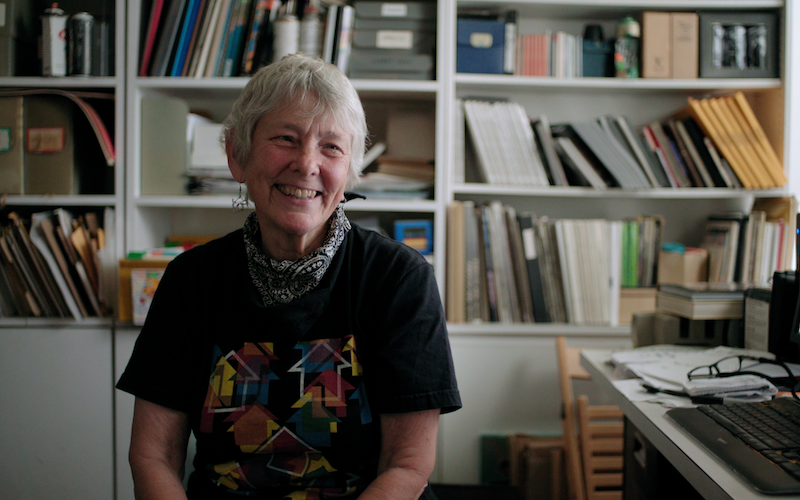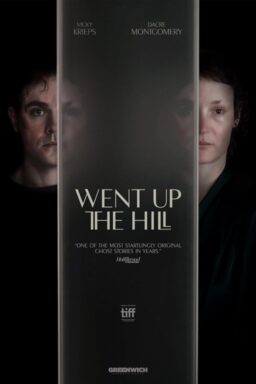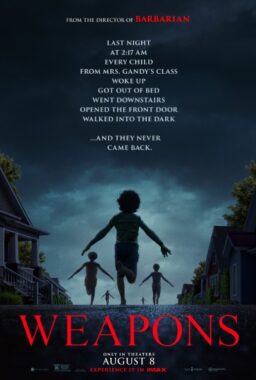Selina Miles’ “Martha: A Picture Story” is the kind of documentary that bestows upon you a new hero—that is, if you weren’t already hip to the groundbreaking photos and graffiti culture influence of Martha Cooper. Directed with infectious zeal, it’s a photographer bio-doc that always feels to be in motion, especially given its excellent editing, fascinating subject, and narrative ambition to honor those on the other side of Cooper’s camera.
The story starts off with a hell of a hook as it introduces Cooper in 2018, gearing up at nighttime like an assassin prepared for their next guerrilla operation. She rides with men whose faces and voices are obscured, and she’s there with them, camera in hand, on a subway platform as they make a massive display of graffiti on the walls of the station. It’s just another day in the office for the 75-year-old white American, who has garnered an international cult celebrity in the world of graffiti and hip-hop art.
Miles’ documentary has an exhilarating approach to its story—the history of Cooper’s photography comes alive with an energetic presentation of archival photos and headlines, mixed with modern day footage of her reflecting upon their past work lives, like with her New York Post photo editor friend, Susan Welchman. They paint a picture of two women who were driven to find the best images, a dedication that unveils a true love for Cooper especially: capturing the city in its most natural state, with the people who are overcoming the hardships of their environment. Her interest in graffiti artists like Dondi, and their artistry, is like an affect of that compassion; she gets special access to a community, and it brings out her brilliance as a photographer in return. The world wasn’t ready for any of it—too busy chastising graffiti as a criminal act—but the doc shows the seeds she planted, and later how she helped inspire graffiti artists far beyond New York City.
But what makes this documentary so special is that it expands beyond Martha’s work – it’s not just the story of Cooper as a radical freelance photographer, or the beautiful images the doc shows for varying lengths, but it’s also the story of the people and culture behind such art. “Martha: A Picture Story” helps one see graffiti in a different way, especially with interviews with the now grown-men who used such artistic displays as a means of expression, (“We called it writing, we didn’t call it graffiti,” says one man), treating NYC subways in the early ’80s as their canvases. Whether its focus is on Cooper or her subjects, “Martha: A Picture Story” is also an exhilarating account of artists expressing themselves beyond a paycheck—freelancers, hustlers, seeds of culture who live for art and making their mark. But when the focus is on her, “Martha: A Picture Story” becomes a deeply inspirational testimony to being an ally, of looking at lives different from yours and using your skills to honor their stories.

For decades, Marion Stokes recorded various news channels on end, local and national. Such a dedication led to a massive amount of VHS tapes and a lifestyle that straddled the line of hoarding and collecting. It also led to a massive documentation of how media shapes our idea of the world, from one segment to the next. Years after her passing, her recordings have become especially helpful to current archival efforts in tracking how different events, ranging from the Iran Hostage Crisis to 9/11 to Sandy Hook, were covered.
Matt Wolf’s “Recorder: The Marion Stokes Project” has very broad and grating approach for its nonetheless compelling subject, and the thousands of hours of history in the making that she recorded. As it uses archival clips, (it’s uncertain whether they all come from her collection), the documentary becomes like a clip show for American media, taking us through different cultural milestones (the “1984” Apple ad, the night Obama was elected) and filling much of its runtime with them. The clips range from dry to emotionally manipulative, as in a sequence where four different broadcasts are shown all at once from the morning of September 11, 2001. As one tower is on fire, the channels slowly change from their regular programming to a special news report. Queasy anticipation of the plane hitting the second tower is used as tension for the sequence, and it’s an incredibly tactless, cheap way to garner an emotional response.
Within this assortment of clips is the story of Stokes, namely how she gained notoriety as an outspoken black Communist woman in the 1970s who had compelling points about media to share in her own TV appearances, before living a more private, though wealthy life. Talking head interviews from those who were close to her—including her children, her chauffeur, and her ex-husband—elaborate on the enigmatic presence she held in the apartment in which she spent most of her time, where a TV was on until the day she died. Throughout these years she was a forward thinker, the documentary argues, especially when it came to the finite importance of media.
But the documentary can’t find a balance between paying tribute to an eccentric mind and also trying to condense the experience of American news history. Even when media scholars chime in as faceless voices, emphasizing the importance of certain events that Stokes documented, “Recorder” struggles to make a strong case that you must keep watching.












